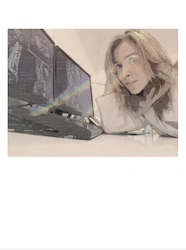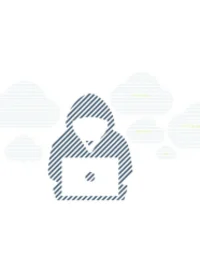I find this question particularly interesting. This is the phrase I use to define my Twitter profile, @Vilavaite. I really believe analysing reality with the sight of a radiologist has distinctive features.
First, we radiologists see beyond the surface of things. We are used to seeing the inside of our patients' bodies and in everyday life that translates into wanting to deepen in all things and in most situations. We are not superficial people. Possibly some radiologists are even quite profound.
In addition, we are used to getting the
best out of grayscale images of our patients, being able to detect many
nuances. We delve into detail and appreciate a thousand subtleties about what
interests us the most: our patients. This is something that we also transfer
outside our work: we know how to appreciate the small details. For us things in
life are not black or white; there are hundreds of shades of gray that others
would not appreciate.
On the other hand, as some of us usually work in semi-darkness mostly with grayscale images, we greatly value the presence of colour in life. We are grateful to technology, including artificial intelligence, that is bringing more colour to our radiological life: some years ago, only Doppler contributed colour to our ultrasound images but now 3D images in multiple techniques yield not only more realistic and anatomical pictures but also allow us to develop our artistic facet, bringing colour to the different organs and lesion, for example through segmentation.
It will take a long time before robots replace the radiologists. Thanks to artifical intelligence (AI) ,radiologists will be more efficient and accurate, and we are looking forward to these changes. We radiologists are a bit nerdy, so we will adapt to the improvements artificial intelligence will achieve to facilitate and upgrade the radiologist's work.
Although
most radiologists currently work in specialised teams—I am working mainly in
musculoskeletal radiology—many of us continue to maintain the spirit of the
classic diagnostic radiologist, assessing the patient in a global way,
evaluating the integrity of his anatomy. At the moment we do not dare to value
your psyche, but that could change soon, if the advances in functional MRI (fMRI)
are confirmed. So—I realise it is not very modest to say—radiologists are
perhaps the specialists with the most global medical knowledge. I mean,
radiologists are able to relate the different pathologies that can concur
simultaneously in the same patient, as long as those processes are manifested
in medical imaging.
In the quietness of our reading room we do not expect our effort to be recognised by patients. We like our way of working, mostly not in direct contact with the patient, not because we are nerds, but because this “isolation” allows us to be more focused on our work, always thinking about the patient ‘s health interest. Yes, indeed, although we usually only know the patient through their imaging studies and their electronic health records data, the patient is always on mind. Our first interest is to obtain the best possible images for the technical possibilities, with the essential collaboration of radiographers, working as a team. Second, we need to be focused to analyse those images in the patient's clinical context, something that would be much harder in the presence of the patient. In short: our work cannot be more focused on the patient. Perhaps we should have a greater recognition, and be more accessible. In that sense, social networks can allow radiologists’ work to be better known.
Please, do not identify wrongly radiologists’ apparent isolation with a lack of communication: we are the doctors who interact the most with other specialists inside the hospital. Although this interaction is often virtual, collaboration is our permanent goal.
I must say, once more, false modesty aside: radiologists usually have a good command of the language. In my case, truer in Spanish, my native language. But in classical reports radiologists are usually clear and concise. This language economy is very useful, transferred to Twitter. Of course, there are exceptions to this norm, and some colleagues like using bombastic and unclear language. The progressive proliferation of so-called structured reports will soon cause radiologists to lose our literary proficiency
I hope you now agree with me: the radiologist’s gaze is special, deep, meticulous, sharp, perspicacious and even witty. I strongly recommend you to include at least a radiologist on your Twitter timeline.
I shall take this opportunity to encourage all medical students
to think about specialising in radiology. Not only because it has an exciting
future, but also because seeing life with the perspective of a radiologist is
fascinating.









